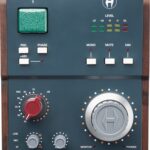Musicians and producers searching for a unique plugin that rewards experimentation and creativity need look no further than Objeq Delay. Combining an LFO, an acoustic modeled filter, and a delay, this is an effect useful for mindwarped beats, intergalactic echoes, or really anything your imagination is able to conjure.
Objeq Delay Features
- Flexible LFO, Filter, and Delay, with Acoustic Modeling
- Hundreds of Presets to Inspire your own Creations
- Intuitive User Interface
- Small Footprint – Install takes only 14MB
- Supports Most Major Plugin Formats
- Street Price around $100
Developed by Applied Acoustics Systems (AAS), Objeq Delay needs to be in the toolbox of creative musicians all over the world. Let’s check it out!
One Delay to rule them All
After an easy install, Objeq Delay inspires creativity almost instantaneously. I created a simple 2/4 beat and ran it through one of the many presets and was shocked at the musicality of this new loop. It evolved in a myriad of interesting and inspiring ways. Tweaking ensued.
The included presets are organized in banks by function – echoes, rhythm manglers, drones, etc. The navigation bar at the top of the plugin window allows for saving new and edited presets as well as the creation of user banks. Some time spent vetting these presets offers a nice overview of Objeq Delay’s capabilities.
Thankfully, the plugin’s intuitive and straightforward interface makes tweaking of the presets a simple process.
Objeq Delay’s Intuitive Interface
In a similar manner as Eventide Fission, Objeq Delay features a user interface that fosters the creative process. We already talked about the navigation bar, and the rest of the plugin is laid out in a clear manner. From left to right, there are LFO, Filter, Object, Delay, and Mixer modules.
The LFO module lets you modulate various parameters throughout the rest of Objeq Delay. You are able to sync its rate to an external clock source and/or tweak it manually. Waveform type (along with its phase and pulse width), modulation destination (with amount and offset) are the other LFO parameters. Be sure to try out the random waveform!
Objeq Delay provides both high and low pass filters that let you control the number of poles. The cutoff frequency for each filter is also controllable. The Filter module works closely with the Object module to effect the overall sonic output.
The Object module obviously lies at the heart of Objeq Delay. You are able to switch between four different physical objects – beam, plate, string, and drumhead – with each greatly influencing the resultant sound. Use the frequency parameter to control the first partial or resonant frequency of each object type.
The formant and material parameters warrant experimentation as well as an analysis of Objeq Delay’s copious amount of presets. The effect of each parameter changes based on the object type. Explore! Experiment!
Featuring two channels (left and right) each with two delay lines (labeled First and Echoes), the Delay module is also a blast to play with. Both lines are syncable and there is a Ping Pong switch for added stereophonic fun. The feedback, high cut, and low cut parameters work as they should.
You are even able to summon wild-sounding effects without using the delay, but remember that ancient Chinese wisdom – delay is the antidote for anger. A pretty self-explanatory Mixer module and a convenient level meter round out Objeq Delay’s interface.
Objeq Delay is the most fun I’ve had using an effect – hardware or software – in years. Strymon could put this functionality in a piece of hardware, release it as a limited edition, and it would be fetching four-figures on Reverb.com. If you are a creative musician, you need this effect! Boom!





[…] over. Like the best effects, Objeq Delay warrants a copious amount of experimentation. As such, read our full review and then head over to your favorite online music retailer to pick up your own copy. You don’t […]